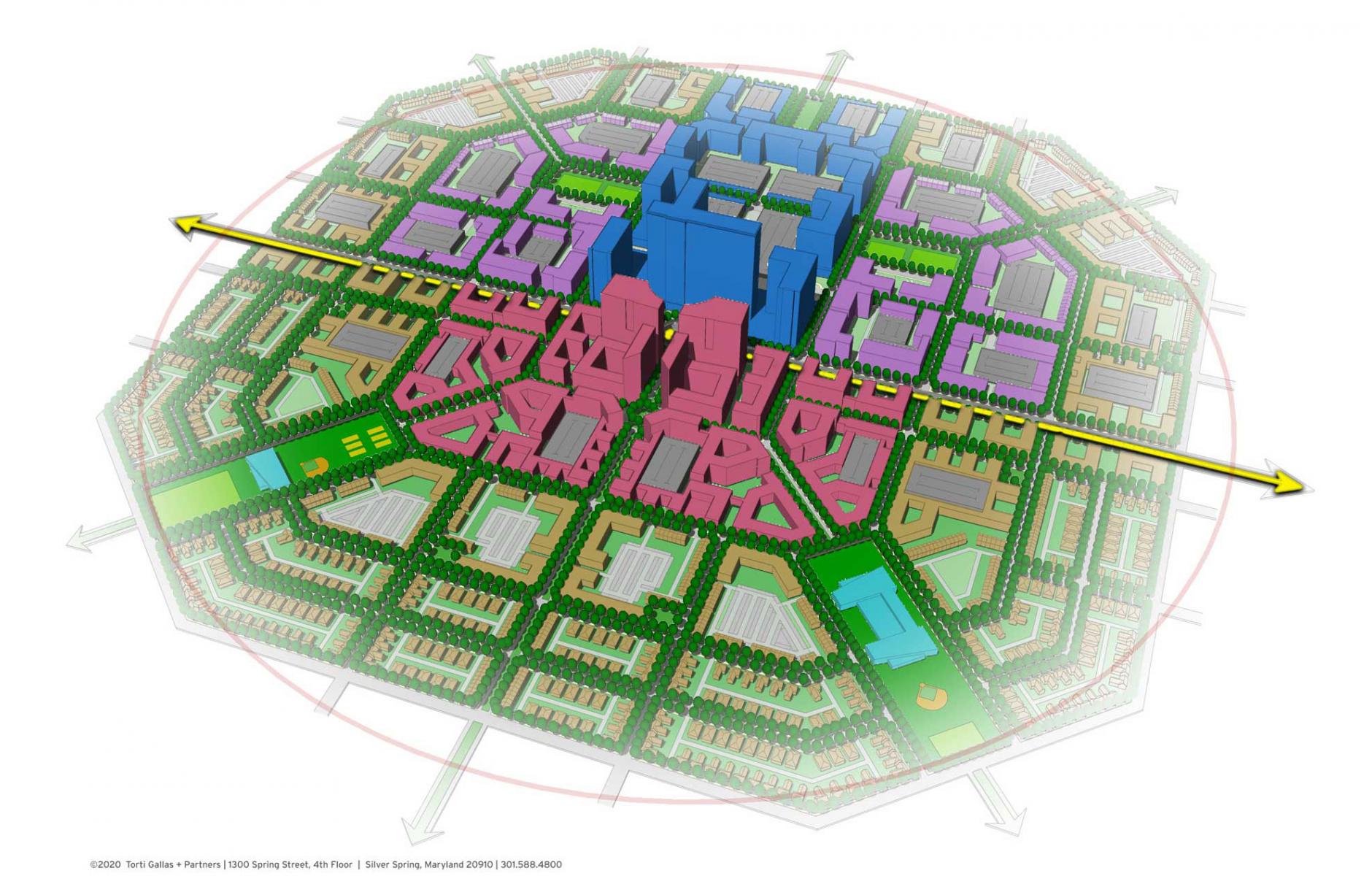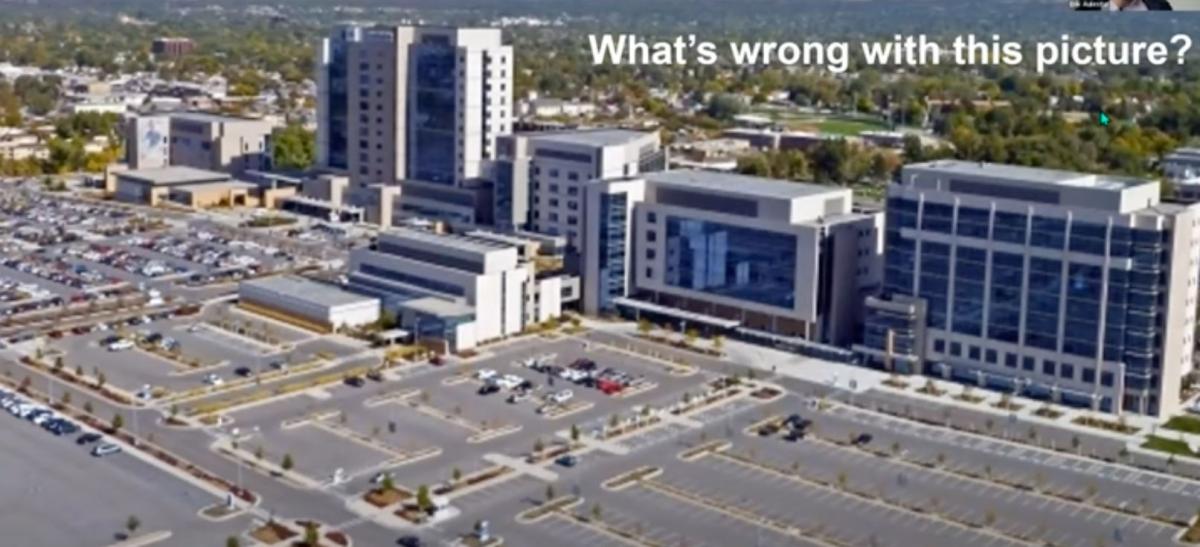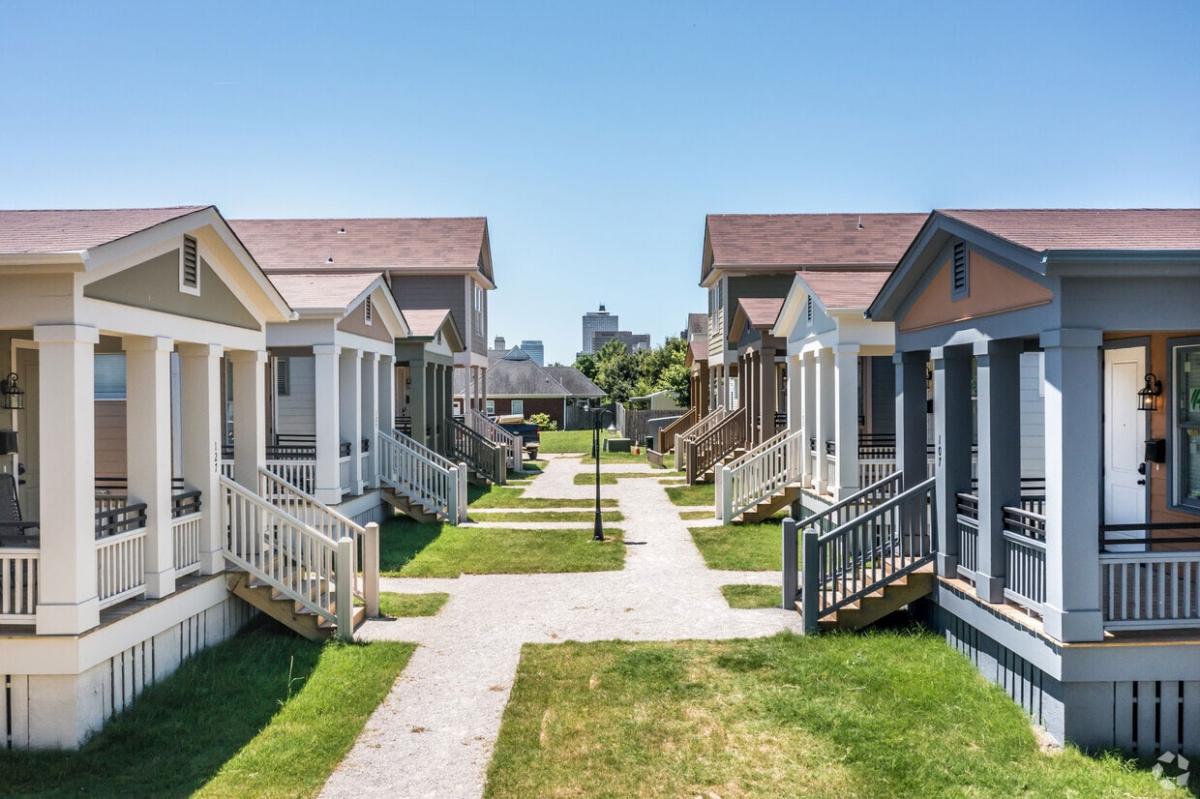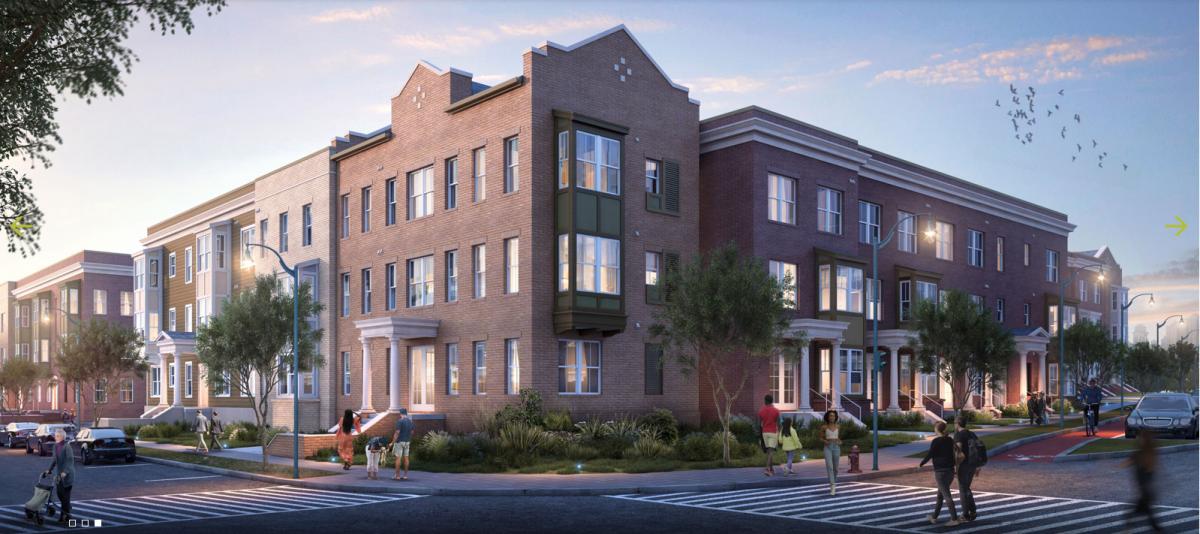
The potential of mixed-use health districts
Hospitals are economic anchors in both large cities and smaller communities, employing 6.7 million people and generating $900 billion in revenue a year, nationwide1. While medical centers contribute substantially to jobs and wealth, they typically generate an automobile-oriented built environment that discourages walking, biking and outdoor activities for employees, patients, families, and residents in the immediate neighborhood.
But hospitals large and small, working alone and collectively, are beginning to adopt a more urbanist approach that has potential to transform cities and towns—much like transit-oriented development of 20 years ago, according to experts in health districts that participated in a CNU webinar. See the rendering at the top of the article for a theoretical image of how hospital-oriented development (HOD) works.

“If we change our thinking, hospitals can be an economic development engine and resilient real estate model, with positive impacts on people and the environment,” notes Erik Aulestia, principal of Torti Gallas & Partners, who coined the term “hospital-oriented development.” He was joined by Ben Schulman, vice president of real estate and economic development with the Memphis Medical District Collaborative (MMDC), a premiere example of a health district implementing a new urban approach to community investment. While Aulestia described how even a small hospital can be a community change agent, Memphis shows the magic that can happen when major institutions come together, explains Joanna Lombard, professor of architecture at the University of Miami, the interviewer.
Simply put, HOD “is the next big thing,” Aulestia claims. The HOD model is a set of principles that places the hospital at a center of the community, driving the demand for medical offices, in turn attracting other kinds of office users. Building residential close to the hospital attracts people who work in the medical facilities to live nearby. Retail and civic spaces add to a complete neighborhood, which makes the hospital a more attractive place to work. “The open space is really important too, because it promotes psychological health,” he says.
The physical environment has a big impact on behavior, which in turn contributes to health. “So, the hospital is not just there for when you get very sick, but it is located in a place that helps you keep from getting sick in the first place,” Aulestia explains.

HOD can apply to the full spectrum of hospitals, including nonprofit and for-profit, big and small, teaching and non-teaching, and federal, state, and local. “We are working on a mall redevelopment, and one of tenants is a hospital system,” he explains. “They are creating an ambulatory surgery center.” He describes the facility as a “micro-hospital,” an important part of the redevelopment.
Nonprofit hospitals are required by law to make community contributions, Aulestia explains. With a little creativity, these institutions can expand their investments beyond the facility walls, partnering with other local organizations.
Aulestia listed a number of notable mixed-use health district plans around the US, including the Coeur d’Alene Health Corridor Master Plan, the Florida Hospital Health Village in Orlando, the Baton Rouge Health District, the University of Maryland Capitol Region Medical Center, and South Bend, Indiana, studies for a health district on the north side of downtown. “These are examples of the mixed-use development that is starting to be considered and implemented,” he says. But none of them are having as much current impact as the Memphis Medical District, a 2.6 square mile area with eight anchor institutions just east of downtown.
The district has 30,000 employees, 10,000 residents, and 8,000 students in six distinct neighborhoods, Schulman says. MMDC demonstrates “how an entire group of institutions can come together and address all of the interstitial spaces that were pretty bleak before they paid attention to them,” notes Lombard, who is an expert in health districts. The institutions occupy nearly an entire square mile, with 270 acres of surface parking.
The District has made dramatic strides since its launch in the middle of the last decade, Schulman explains. A 2017 study showed that 2,600 residential units could be built in the district. Since then, land devoted to real estate development has risen to 340 acres, from 253 acres. The district is still a thousand units short of its goal, Schulman says, but in 2022 alone, 800 new units were announced. This activity followed little residential development for a half century—as the district lost two-thirds of its population from the mid-20th Century to about 2015.

Meanwhile, MMDC has increased procurement to $1.37 billion, from $653 million—so it is contributing directly to the local economy through its “buy local,” “hire local,” and “live local” programs. Almost unique among health districts, MMDC has major programs to improve local streetscapes and make them more walkable and bikeable, through traffic calming and simultaneously creating public spaces for people to be outside. The district has made extensive use of “tactical urbanism” to build these public spaces inexpensively and quickly.
“MMDC stitches together the social, cultural, and economic built environment fabrics between the campuses and the communities in which they sit,” Schulman explains. The district has five primary areas of focus:
- Keep neighborhoods clean and green
- Improve parks, public spaces, and streets
- Support small businesses and real estate development
- Organize free events and programs
- Offer resources to residents, employees, and students
MMDC is a model for how to do this on a large scale. They get every aspect of the New Urbanism approach, which is shown in their emphasis on real estate and economic development; improving the quality of the public realm through streetscaping, placemaking, mobility, and clean and safe streets; and public art, community engagement, and events. The public face of MMDC is their “ambassador” program, which hires local residents to walk the district every day and address problems.
The real estate development has a three-tiered grant program, from $5,000 seed funds for architecture renderings and pro-formas; to $30,000 to $250,000 to get projects “shovel ready;” to $250,000 to $3 million to provide “gap funding” to bring projects to construction. The latter fund is in partnership with Pathway Lending, and three regional banks have contributed $10 million each. The Kresge Foundation and Hyde Family Foundation have also been instrumental and setting this up.
The investment has contributed to remarkable new urban projects in the district, notably the infill, missing middle Malone Park Commons, the ground-up transit-oriented development Orleans Station, and cool historic rehabilitations.
Hospitals have large service requirements, notes Aulestia. Creating a successful health district involves figuring out how to configure these service requirements in a way that works functionally for hospitals, but also serves the rest of the community. Bringing in mixed-use, retail, open space, and transit involves elements that have to do with creating good urbanism, but also healthy communities.
See the full webinar, "Design and Development of Mixed-Use Health Districts."
1 Erik Aulestia, presentation.
Editor's note: This article addresses CNU’s Strategic Plan goal of growing the supply of neighborhoods that are both walkable and affordable.




